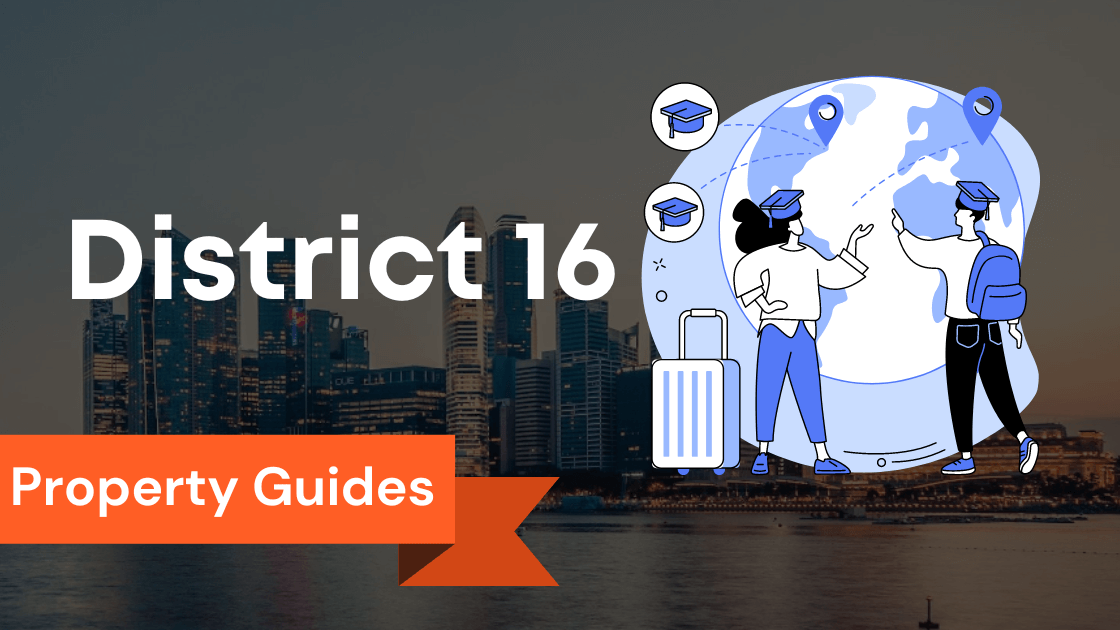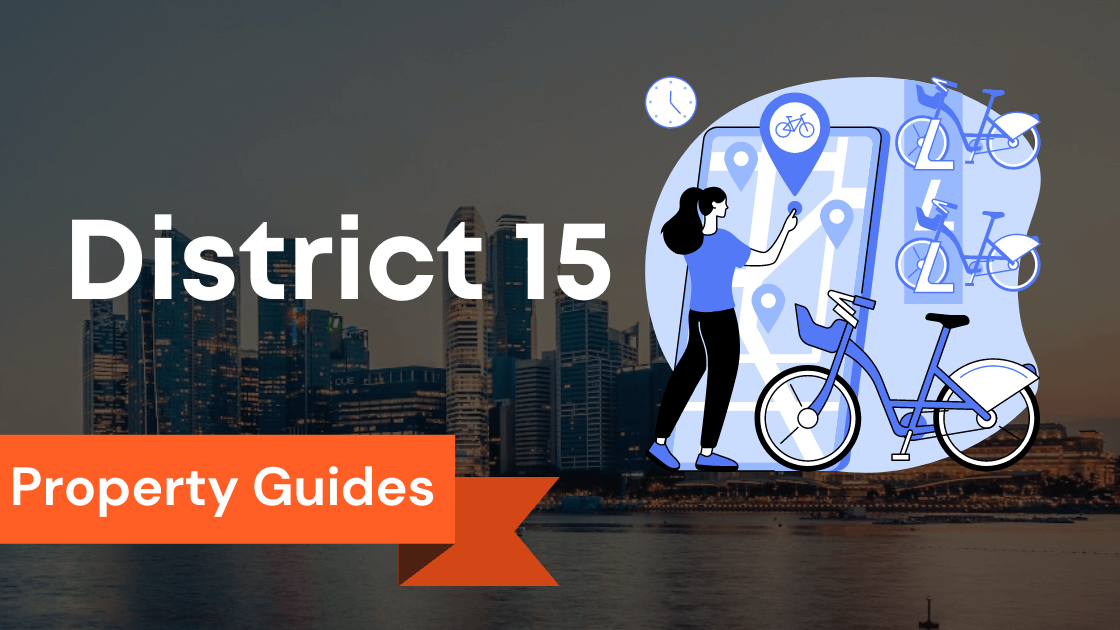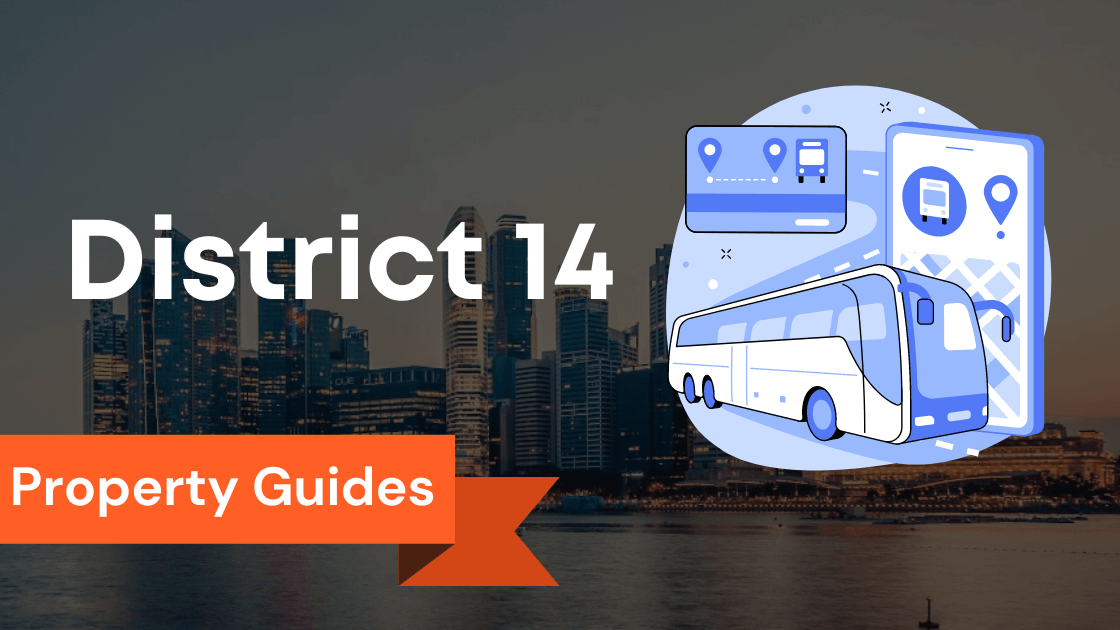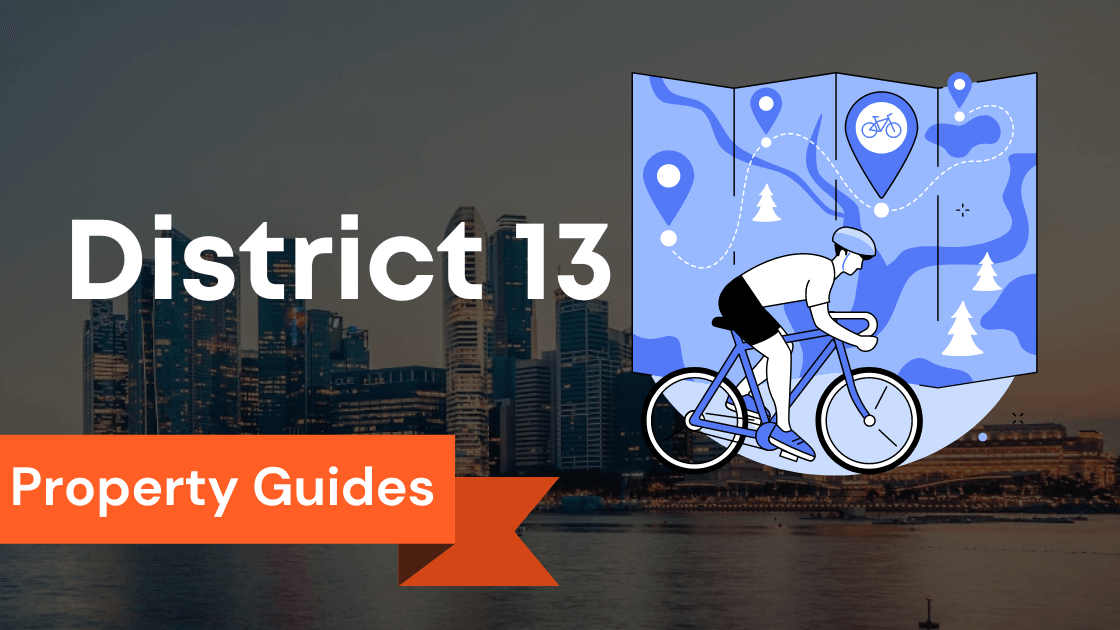Discover District 19 Singapore Condos in Hougang, Punggol, and Sengkang | Your Guide to D19 Singapore Property in Serangoon Garden
Introduction to District 19 Singapore District 19 Singapore is a vibrant and highly sought-after...
Explore District 18 Singapore Property for Sale: Pasir Ris, Tampines Condos at the Best Price – Research and Square Footage
Introduction to District 18 Singapore Situated in the eastern part of Singapore, District 18 is a...
Explore District 17 Singapore Property: Changi Airport Condos for Sale in Changi Village | Find Top Property Listings and Prices
Introduction to District 17 Singapore District 17 Singapore, located in the eastern part of the...
Explore District 23 Singapore: Bukit Batok, Choa Chu Kang, Bukit Panjang, and Dairy Farm | Landed Property and Condos for Sale in D23 | Condo Directory
Discover District 23 Singapore – a vibrant, diverse oasis in the west. Bukit Batok, Bukit Panjang,...
Sale in District 22: Exploring Jurong and Tuas, Boon Lay, Condo Directory, and Condos for Sale in Singapore
Explore the vibrant tapestry of District 22 Singapore, a captivating fusion of residential,...
Discovering the Charm of District 21 in Singapore: A Comprehensive Neighbourhood District Guide in Upper Bukit Timah and Clementi
Step into the enchanting world of District 21 Singapore, where vibrant urban living meets the...
House and Condo for Rent and Sale in District 16 Singapore – Find Your Ideal Property in Bedok and Upper East Coast | Price and Rental
Overview of District 16 Singapore and its popular neighborhoods District 16 Singapore, located in...
Explore District 15 Singapore: Find East Coast Condos and Properties for Sale in Marine Parade | Condo Sale in District 15
District 15 in Singapore is a highly sought-after residential area on the island's eastern coast....
Discover the Charm of District 14 Singapore: Paya Lebar, Geylang, Eunos Condos and More in the Vibrant Condo Directory
Situated in the heart of Singapore, District 14 is a vibrant and bustling area that offers a...
District 13 Singapore: Explore Property Rentals, Condos, and Apartments in the Area for Optimal Gain in Price Trends
District 13 Singapore is a vibrant and bustling area located in the eastern part of the country....
Comprehensive Guide to District 12 Properties: Find Apartments and Condos for Sale in Thomson, Novena, and Toa Payoh Singapore
Discover District 12 Singapore, where vibrant urban living meets convenience. From historical...
Unveiling the District 11 Singapore Property Landscape: Exploring Price Trends, Capital Gain, Apartment, Condos and Rental Yields
Welcome to District 11 Singapore, a captivating blend of urban vibrancy and serene living. Its...
Transportation plays a crucial role in our daily lives, enabling us to travel from one place to another with ease. There are various modes of transportation available, each catering to different needs and requirements. In this article, we will explore different types of transportation and their significance in today’s world.
Key Takeaways
- Modes of Transportation: Transportation can be categorized into road, rail, air, water, and pipeline modes. Each mode serves specific purposes and has unique characteristics.
- Transportation Systems: Transportation systems provide infrastructure and networks for efficient movement. They integrate different modes to ensure a seamless flow of cargo and passengers, supporting economic growth and trade.
- Intermodal Transportation: Intermodal transportation combines multiple modes like trucks, trains, and ships for efficient cargo movement. It offers cost savings, flexibility, and improved logistics efficiency.
- Evolution of Transportation: Humans used animals, carts, and sleds for early transportation. Technological advancements, like steam engines and combustion engines, revolutionized transportation, leading to faster and more efficient modes.
- Advantages and Disadvantages: Modern transportation offers faster travel and convenience, but also contributes to environmental issues. Ancient methods were less efficient but relied on sustainable resources.
- Primary Types: Road transportation includes cars, buses, trucks, motorcycles, and bicycles. Each type serves different purposes, from individual mobility to freight transportation.
- Economic Contribution: Road transportation is crucial for economic growth and trade. It connects cities, towns, and rural areas, supporting industries like manufacturing and retail.
- Challenges and Solutions: Challenges in road transportation include traffic congestion and safety issues. Solutions involve efficient transportation systems, improved traffic management, and alternative modes like public transit and cycling.
- Facilitating Freight Movement: Rail transport efficiently moves large quantities of freight over long distances. It connects production centers with consumption areas, supporting industries like mining and agriculture.
- Long-Distance Travel: Air transportation revolutionized long-distance travel, connecting distant destinations quickly. It’s essential for international trips, tourism, and global business.
- Global Trade: Maritime transportation moves goods and cargo through water bodies, playing a vital role in global trade and commerce.
- Combining Modes: Intermodal transportation combines land, sea, and air modes for efficient cargo movement. It optimizes strengths and offers flexibility.
- Underground Network: Pipeline transport moves liquids and gases through interconnected pipes, providing efficient long-distance transportation.
- Promoting Sustainability: Bicycling and walking promote sustainable transportation, requiring collective efforts from governments and communities.
- Connecting Cities: Public transportation connects cities and communities, providing convenient and eco-friendly travel options.
- Electric Vehicles: EVs reduce emissions and offer cost-effective, sustainable transport. Challenges include range and charging infrastructure.
Understanding Modes of Transportation: Exploring the Diverse Ways We Move People and Goods
What are the different modes of transportation?
Transportation can be categorized into different modes, including road, rail, air, water, and pipeline.
Each mode has its unique characteristics and serves specific purposes.
Road transportation involves the use of vehicles, such as cars, buses, and trucks, on roadways.
Rail transport relies on railways and trains to move both freight and passengers.
Air transportation utilizes aircraft for long-distance travel and global connectivity.
Water transport includes transportation by ships, ferries, and other vessels on rivers, lakes, or oceans.
Pipeline transport involves the use of pipelines to transport liquids or gases.
How do transportation systems contribute to the movement of people and goods?
Transportation systems provide the infrastructure and networks that allow the efficient movement of people and goods.
They include terminals, stations, and various supporting facilities.
These systems integrate different modes of transportation to ensure a seamless flow of cargo and passengers.
For example, intermodal transportation combines multiple modes, such as trucks, trains, and ships, to transport goods from one location to another.
By providing reliable and convenient transportation options, these systems facilitate economic growth, trade, and social connectivity.
What is intermodal transportation and how does it work?
Intermodal transportation refers to the use of multiple modes of transport for the movement of goods.
It entails the transfer of cargo from one mode to another at specialized terminals or facilities.
For instance, a shipment may start with a truck transporting goods to a railway terminal, where the cargo is loaded onto a train for long-distance transport.
At the destination, another truck picks up the freight and delivers it to its final destination.
Intermodal transportation offers cost and time savings, increased flexibility, and improved logistics efficiency.
The Evolution of Transportation: From Human Power to Modern Technology
What were the earliest means of transport used by humans?
Before the invention of modern transportation, humans relied on their physical abilities and resources to move from one place to another.
People used animals, such as horses or camels, for transportation purposes.
They also utilized simple tools like carts and sleds to carry heavy loads.
As civilizations developed, the invention of the wheel revolutionized transportation, making it easier to transport goods and people over long distances.
How has technology influenced the development of transportation?
The advancement of technology has played a significant role in the development of transportation.
The Industrial Revolution marked a turning point, with the invention of steam-powered engines.
This led to the expansion of railways, enabling faster and more efficient long-distance transportation.
The invention of the combustion engine revolutionized road transportation with the introduction of automobiles.
The aviation industry was transformed by the invention of the airplane, allowing for rapid global travel.
Technological innovations continue to shape transportation, with the development of electric vehicles, high-speed trains, and autonomous vehicles.
What are the advantages and disadvantages of modern transportation compared to ancient methods?
Modern transportation offers numerous advantages over ancient methods.
It allows for faster and more efficient travel, reducing transit time for both passengers and freight.
The ability to cover long distances in a relatively short time has opened up new opportunities for trade and tourism.
Modern transportation systems also provide greater comfort, safety, and convenience compared to ancient methods.
However, modern transportation is not without its drawbacks.
It contributes to environmental issues like pollution and carbon emissions.
The reliance on fossil fuels for many modes of transportation also raises concerns about energy consumption and sustainability.
Road Transportation: Navigating the Roadways for Efficient Travel
What are the primary types of road transport?
Road transportation encompasses various types of vehicles that travel on roadways.
The most common types include cars, buses, trucks, motorcycles, and bicycles.
Cars offer individual mobility and flexibility, allowing people to travel short distances quickly.
Buses play a crucial role in public transportation, providing mass transit options for urban and rural areas.
Trucks are essential for freight transportation, delivering goods to stores, factories, and homes.
Motorcycles and bicycles offer a cost-effective and environmentally friendly mode of transportation for short distances.
How does road transportation contribute to the economy?
Road transportation is vital for the economy, facilitating the movement of goods and people for various industries and sectors.
It provides connectivity between cities, towns, and rural areas, enabling the exchange of goods and services.
Efficient road transportation enhances trade, as it allows for the timely delivery of products to markets.
It supports industries like manufacturing, retail, and e-commerce, ensuring the availability of goods to consumers.
Road infrastructure development also creates job opportunities and stimulates economic growth.
What are the challenges and solutions for efficient road transport?
Despite its benefits, road transportation faces several challenges.
Traffic congestion is a significant issue in many cities, resulting in delays, increased fuel consumption, and decreased productivity.
Road safety is another concern, with accidents causing injuries and loss of life.
To address these challenges, measures like the development of efficient transportation systems, improved traffic management, and investments in infrastructure are essential.
The promotion of alternative modes of transportation, such as public transit and cycling, can help reduce traffic congestion and improve air quality.
Rail Transport: A Detailed Look at Railways and Their Role in Freight and Passenger Transport
How does rail transport facilitate the movement of freight?
Rail transport offers an efficient and cost-effective mode for the movement of freight.
Trains have the capacity to carry large quantities of goods over long distances.
Railways often connect major production centers, such as factories and ports, with consumption areas, ensuring a smooth flow of goods.
The use of dedicated freight trains allows for the transportation of heavy and bulky items that would be impractical to transport by road.
The rail network plays a crucial role in supporting various industries, including mining, agriculture, and manufacturing.
What are the advantages of rail transport for passenger travel?
Rail transport provides several advantages for passenger travel.
Trains offer a comfortable and spacious environment, making long-distance journeys more pleasant compared to road travel.
Many trains provide amenities such as seating options, dining cars, and sleeping compartments, ensuring a convenient experience for passengers.
Railways often connect major cities, providing an efficient alternative to air travel for shorter distances.
Additionally, trains are considered a safer mode of transport compared to road transportation.
How are railways evolving to meet the demands of modern transportation?
Railways are continuously evolving to meet the demands of modern transportation.
High-speed rail networks are being developed in various countries, enabling faster travel times between cities.
These systems offer a sustainable alternative to air travel for distances up to a few hundred miles.
Technological advancements, such as the implementation of automated train control systems and improved signaling, enhance safety and operational efficiency.
The integration of railway networks with other modes of transportation, like buses and bicycles, provides seamless and convenient travel options for passengers.
Air Transportation: Soaring Through the Skies for Speed and Global Connectivity
How does air transportation enable long-distance travel?
Air transportation revolutionized long-distance travel, significantly reducing transit times compared to other modes of transportation.
Aircraft have the ability to cover vast distances in a relatively short time, connecting destinations that would otherwise be impractical to reach.
Air travel is essential for international trips, allowing people to traverse continents in a matter of hours.
The availability of numerous airports worldwide has increased accessibility and opened up new opportunities for business, tourism, and cultural exchange.
What are the benefits of air transport for international trade?
Air transport plays a crucial role in facilitating international trade by enabling the swift movement of goods across borders.
It offers time-sensitive solutions for urgent shipments that need to reach their destination quickly.
The rapid delivery of perishable items, high-value goods, and time-critical components is made possible by air transportation.
Furthermore, air cargo services provide connectivity to remote locations and facilitate global supply chains.
The reliable and efficient nature of air transport contributes to the growth of international trade and the global economy.
What are the environmental impacts of air transportation and how can they be mitigated?
Air transportation has environmental implications, primarily related to greenhouse gas emissions and noise pollution.
Aircraft engines emit carbon dioxide (CO2) and other greenhouse gases, contributing to climate change.
Noise pollution from aircraft can also have negative effects on communities near airports.
To mitigate these impacts, the aviation industry has been working.
Maritime Transportation: Navigating the Seas to Move Bulk Goods and Cargo
Maritime transportation involves the movement of goods and cargo through bodies of water.
This type of transportation plays a crucial role in global trade and commerce, with cargo ships and freight services serving as the main players in this industry.
Maritime Shipping: Overview of Cargo Ships and Freight Services
Cargo ships are large vessels specifically designed to transport goods and cargo over long distances across water.
These ships come in various sizes and capacities, with some capable of carrying thousands of containers.
Freight services, on the other hand, refer to the companies and services that facilitate the shipping of goods through maritime transportation.
Benefits of Maritime Transportation in Logistics
Maritime transportation offers several advantages in logistics.
One of the key benefits is its ability to handle large volumes of goods efficiently.
Cargo ships have a high carrying capacity, allowing for the transportation of bulk quantities of goods in a single journey.
Additionally, maritime shipping provides a cost-effective solution, especially for long-distance transport, compared to other modes of transportation.
Challenges and Considerations in Maritime Shipping
While maritime transportation offers numerous benefits, it is not without its challenges and considerations.
One of the main challenges is the dependency on certain factors such as weather conditions and navigation routes.
These factors can affect shipping schedules and overall efficiency.
Furthermore, ensuring the safety and security of cargo during transit is a critical consideration in maritime shipping.
Intermodal Transportation: The Power of Seamlessly Combining Different Transport Modes
Intermodal transportation involves the use of multiple transport modes to move goods and cargo across various locations.
It combines different modes such as land, sea, and air to create a more efficient and flexible transportation system.
Understanding Intermodal Transportation and its Common Modes
Intermodal transportation utilizes common modes such as trucks, trains, ships, and airplanes to transport goods from one destination to another.
This approach offers greater flexibility and the ability to overcome geographical limitations, allowing for the efficient movement of goods across different regions and continents.
Advantages of Intermodal Transport in Efficient Freight Movement
Intermodal transport provides numerous advantages in terms of efficient freight movement.
By leveraging multiple transport modes, it allows for faster delivery times and reduced transit time.
Moreover, intermodal transportation offers greater accessibility to remote areas and provides a cost-effective solution by optimizing each mode for its specific strengths.
Logistical Considerations for Intermodal Shipping
Intermodal shipping requires careful logistical considerations to ensure the smooth flow of goods and cargo.
Factors such as coordination between different transport modes, proper packaging, and efficient loading and unloading procedures are essential in maintaining the integrity of the supply chain.
Additionally, effective communication and information sharing among all stakeholders play a crucial role in successful intermodal transportation.
Pipeline Transport: Delivering Essential Resources through an Underground Network
Pipeline transport involves the transportation of essential resources through an underground network of pipelines.
This mode of transportation is mainly used for the transport of liquids and gases over long distances.
An Overview of Pipeline Transport and Its Application
Pipeline transport utilizes a system of interconnected pipes to transport resources such as petroleum, natural gas, and water.
This mode of transportation is highly efficient and cost-effective, offering a reliable means of delivering essential resources to various locations.
Benefits and Limitations of Pipeline Transportation
Pipeline transportation offers several benefits, including the ability to transport large quantities of resources with minimal energy consumption.
It also reduces transportation costs and minimizes the environmental impact compared to other modes of transportation.
However, pipeline transport is limited to the transport of specific resources and requires extensive infrastructure and maintenance to ensure its proper functioning.
Managing and Maintaining Pipeline Infrastructure
Managing and maintaining pipeline infrastructure is crucial to ensure the efficient and safe transportation of resources.
Regular inspections, maintenance, and repairs are necessary to prevent leaks, corrosion, and other forms of degradation.
Additionally, implementing strict safety measures and emergency response protocols is vital to mitigate potential risks associated with pipeline transport.
Bicycle and Pedestrian Modes: Human Power and Eco-Friendly Transportation
Bicycle and pedestrian modes of transportation revolve around human-powered movements, promoting eco-friendly and sustainable ways of commuting within urban environments.
The Advantages of Bicycle and Pedestrian Modes in Urban Environments
Bicycle and pedestrian modes offer various advantages in urban environments.
They contribute to reduced traffic congestion, lower pollution levels, and improved personal health and fitness.
Additionally, these modes of transportation provide greater accessibility and mobility, especially for short-distance travel within cities.
Infrastructure and Safety Measures for Promoting Non-Motorized Transport
Promoting non-motorized transport requires the development of appropriate infrastructure and safety measures.
This includes the creation of dedicated bicycle lanes, pedestrian-friendly sidewalks, and safe crossing points.
Implementing educational campaigns and raising awareness about the benefits of non-motorized transport also play a crucial role in encouraging its adoption.
Promoting Sustainable Transportation through Bicycling and Walking
Encouraging sustainable transportation options such as bicycling and walking involves a collective effort from governments, urban planners, and communities.
By investing in infrastructure and improving safety measures, cities can create a conducive environment for non-motorized transport.
Promoting the benefits of sustainable transportation and incentivizing its use can lead to a more environmentally friendly and healthier future.
Public Transportation: Buses, Trains, and Ferries Connecting Cities and Communities
Public transportation plays a vital role in connecting cities and communities, providing a convenient and efficient means of travel for individuals.
Exploring Different Types of Public Transportation
Public transportation encompasses various modes such as buses, trains, trams, and ferries.
These modes of transportation operate on fixed routes and schedules, offering a reliable and accessible option for daily commuting or traveling between different locations.
The Benefits of Public Transportation for Individuals and the Environment
Public transportation offers numerous benefits for individuals and the environment.
It reduces traffic congestion, air pollution, and greenhouse gas emissions by replacing individual car trips.
For individuals, public transportation provides a cost-effective alternative, eliminates the need for parking, and promotes a more relaxed and productive travel experience.
Improving Public Transportation Systems for Better Accessibility and Efficiency
Improving public transportation systems involves enhancing accessibility and efficiency.
This can be done by expanding the network coverage, increasing the frequency of services, and improving the integration between different modes of transportation.
Advances in technology, such as the implementation of smart ticketing systems and real-time journey planning, further contribute to the overall efficiency and convenience of public transportation.
Hovercraft and Cable Cars: Unique and Innovative Transportation Solutions
While traditional modes of transportation such as cars and trains are widely used, there are also unique and innovative options like hovercraft and cable cars.
Hovercraft are vehicles that are designed to travel over land, water, and other surfaces supported by a cushion of high-pressure air.
They offer several benefits when it comes to transportation.
Benefits of using hovercraft for transportation
Hovercraft provide a versatile form of transport, allowing them to navigate across different terrains effortlessly.
They can travel over land, water, and even ice, making them ideal for areas with challenging geographical conditions.
Additionally, hovercraft can carry both passengers and cargo, offering a flexible solution for transportation needs.
Cable cars, on the other hand, are another unique mode of transportation that offers several advantages.
They consist of cabins or cars that are suspended from cables and are used to transport people to elevated areas, such as mountain peaks or urban areas with steep slopes.
Advantages of cable cars as a mode of transport
Cable cars provide a scenic and enjoyable mode of transportation, offering breathtaking views of the surrounding landscapes.
They are also an environmentally-friendly option, as they are powered by electricity and produce zero emissions.
Cable cars are commonly used in tourist destinations and provide a unique and memorable experience for visitors.
However, implementing hovercraft and cable cars can come with their own set of challenges.
One of the main challenges is the infrastructure required to support these modes of transportation.
Hovercraft need proper docking facilities and maintenance areas, while cable cars require sturdy support structures and cable systems.
Additionally, there can be regulatory and safety considerations that need to be addressed before implementing these unique transportation solutions.
Challenges in implementing hovercraft and cable cars
Ensuring the safety of passengers and addressing any potential environmental and noise concerns can be challenging when implementing hovercraft and cable cars.
Building the necessary infrastructure and integrating them into existing transportation systems can also be complex and costly.
However, with proper planning and careful execution, these transportation options can offer unique advantages in specific situations and locations.
Emerging Technologies in Transportation: Drones, Hyperloop, and Electric Vehicles
In recent years, there has been a significant advancement in transportation technologies, bringing about exciting possibilities for the future.
Drones, hyperloop, and electric vehicles are some of the emerging technologies that are set to revolutionize the way we travel.
Role of drones in transportation
Drones are unmanned aerial vehicles that can be programmed to transport goods and even people.
They have the potential to revolutionize transportation by offering quick and efficient delivery services, especially in hard-to-reach areas.
Drones can significantly reduce delivery times and costs, making them a promising option for the future.
Hyperloop is another technological innovation that has gained attention in recent years.
It is a high-speed transportation system that uses magnetic levitation to propel pods through a vacuum-sealed tube.
Hyperloop has the potential to transport passengers and cargo at incredibly high speeds, revolutionizing long-distance travel.
Potential of hyperloop in revolutionizing transportation
Hyperloop could drastically reduce travel times, making it possible to travel long distances in a fraction of the time compared to traditional transportation modes.
It is also an environmentally-friendly option, as it eliminates the need for fossil fuels and reduces carbon emissions.
However, the implementation of hyperloop comes with its own set of challenges, including the need for extensive infrastructure and addressing safety concerns.
Electric vehicles (EVs) are becoming increasingly popular as a sustainable mode of transportation.
They are powered by electricity instead of fossil fuels, reducing greenhouse gas emissions and air pollution.
EVs offer several advantages, including lower operating costs and quieter operation.
However, challenges remain in terms of charging infrastructure and battery technology.
Advantages and challenges of electric vehicles
While electric vehicles offer numerous advantages, such as reducing dependence on fossil fuels and lowering carbon emissions, there are challenges that need to be addressed.
The limited range of EVs and the availability of charging stations are some of the factors that can impact their widespread adoption.
However, advancements in battery technology and the development of efficient charging networks are helping to overcome these challenges.
Transportation and Supply Chain: Examining the Crucial Role of Transportation in Logistics
Transportation plays a crucial role in supply chain management, ensuring the smooth flow of goods and materials from manufacturers to consumers.
Efficient transportation is vital for meeting customer demands, reducing costs, and maintaining competitive advantage in the market.
Importance of transportation in supply chain management
Transportation is responsible for the movement of goods between different stages of the supply chain, including procurement, production, warehousing, and distribution.
Efficient transportation helps in minimizing lead times, improving inventory management, and meeting customer expectations in terms of delivery times.
The impact of transportation on logistics operations cannot be underestimated.
Logistics operations require effective coordination and synchronization of various activities, and transportation plays a significant role in ensuring that the right products reach the right place, at the right time, and in the right condition.
Impact of transportation on logistics operations
Transportation affects key aspects of logistics operations, including inventory management, order fulfillment, and customer satisfaction.
The choice of transportation mode, such as road, rail, or air, determines the speed, cost, and reliability of delivery.
Efficient transportation helps in optimizing inventory levels, reducing stockouts, and improving overall supply chain performance.
Efficiency and cost considerations are crucial in transportation management.
Transportation costs include both the capital cost of acquiring vehicles and the annual cost of operating and maintaining them.
Effective transportation management involves finding the right balance between cost, speed, and quality of service.
Efficiency and cost considerations in transportation management
Transportation management focuses on optimizing routes, consolidating shipments, and minimizing empty miles to improve efficiency.
Using advanced technologies and data analytics, transportation managers can identify cost-saving opportunities, optimize delivery schedules, and enhance service levels.
Local and Global Impact of Transportation Choices: Energy Efficiency and Environmental Considerations
The choice of transportation modes can have a significant impact on the environment, energy consumption, and overall sustainability.
It is important to consider energy efficiency and environmental factors when making transportation decisions.
Environmental impact of different modes of transportation
Different modes of transportation have varying environmental impacts.
For example, air transportation is known to have a higher carbon footprint compared to other modes.
On the other hand, rail transport is considered to be one of the most energy-efficient modes, producing lower emissions per ton-kilometer traveled.
Energy efficiency is another important consideration when it comes to transportation.
High-energy consumption and dependence on fossil fuels contribute to environmental degradation and climate change.
It is crucial to explore and promote energy-efficient transportation alternatives to reduce greenhouse gas emissions and conserve natural resources.
Energy efficiency of various transportation options
Electric vehicles, for instance, offer a more energy-efficient alternative to traditional combustion engine vehicles.
By using electricity as a source of power, EVs can reduce energy consumption and decrease reliance on fossil fuels.
Additionally, advancements in renewable energy sources can further enhance the energy efficiency of transportation systems.
Developing sustainable transportation solutions is crucial for both local and global communities.
Sustainable transportation aims to reduce environmental impact, promote energy efficiency, and improve the quality of life for people.
This includes initiatives such as promoting public transportation, cycling, and walking, as well as investing in infrastructure that supports these modes of transportation.
Sustainable transportation solutions for local and global communities
By adopting sustainable transportation solutions, communities can benefit from reduced pollution, improved air quality, and enhanced accessibility.
Governments, transportation companies, and individuals all play a significant role in promoting sustainable transportation and making conscious choices that minimize environmental impact.
Choosing the Right Mode of Transportation: Factors Influencing Your Decision
When it comes to selecting a mode of transportation, there are several factors to consider.
The choice of transportation depends on various factors, including the nature of the goods or services being transported, the distance to be covered, and the specific requirements of the transportation task.
Factors to consider when selecting a mode of transportation
Factors such as speed, cost, reliability, capacity, and accessibility are all important considerations when choosing a mode of transportation.
For time-sensitive shipments, air transportation may be the preferred choice due to its quick service and high-frequency connections.
On the other hand, for large and bulky cargo, sea or rail transport may be more suitable.
Comparing the advantages and disadvantages of different transportation modes can help in making an informed decision.
Each mode of transportation has its own strengths and weaknesses, and it is important to evaluate them based on specific requirements and constraints.
Conclusions
Embark on a journey through the intricate world of transportation, where innovation and efficiency intertwine to shape our interconnected globe.
From ancient times, when human power and animals were our steadfast companions on the roads, to the modern era, where cutting-edge technology propels us forward, the evolution of transportation has been nothing short of awe-inspiring.
Picture a world where roads come alive with a symphony of vehicles – cars, buses, trucks, motorcycles, and bicycles – each playing a distinct role in our dynamic society.
Cars grant us unparalleled individual mobility, while buses serve as the lifeblood of urban and rural transit.
Trucks tirelessly traverse the highways, ensuring goods reach their destinations, fuelling the engines of industries.
The nimble motorcycles and bicycles offer a greener alternative for short distances, weaving through the tapestry of modern life.
Yet, the story doesn’t stop there.
Railways, the veins of the transportation network, crisscross continents, seamlessly ferrying both passengers and freight.
Marvel at the grandeur of dedicated freight trains, colossal vessels of transport that carry the weight of industries on their iron shoulders.
Railways are the silent giants that bind production to consumption, mining to manufacturing, creating a symphony of movement that fuels economies.
But this journey isn’t just about technology; it’s about the impact of transportation on our lives.
It’s about how efficient transportation systems bolster trade, cultivate tourism, and drive economic growth.
It’s about the thrill of speed and the luxury of comfort, whether you’re zipping through cities on sleek rails or taking in the countryside from the window of a train.
It’s about facing the challenges of traffic congestion head-on and exploring solutions that promise smoother, greener roadways for all.
Join us as we delve into the heart of transportation – from the bustling roads to the labyrinthine railways – and uncover the stories of innovation, progress, and the ever-unfolding quest to connect people, goods, and dreams.
Get ready to be enthralled, enlightened, and inspired by the boundless possibilities that lie ahead in the world of transportation.
Your journey starts now.
Frequently Asked Questions
What are the different types of transportation?
The different types of transportation include air transport, waterway transport, rail transport, road transport, and cable transport.
What is air transport?
Air transport is a mode of transport that uses aircraft to transport people and goods.
What are the different modes of transport?
The different modes of transport include air transport, waterway transport, rail transport, road transport, and cable transport.
What is waterway transport?
Waterway transport is a mode of transport that utilizes water bodies such as rivers, canals, and oceans to transport people and goods.
What is rail transport?
Rail transport is a means of conveyance of passengers and goods on wheeled vehicles running on rails.
What is road transport?
Road transport refers to the transportation of passengers and goods on roadways using motor vehicles.
What is cable transport?
Cable transport is a broad category that includes transportation systems using cables, such as cable cars and ski lifts.
Why is transport important?
Transport plays a crucial role in connecting people and facilitating the movement of goods, allowing for economic growth and development.
What are the different forms of transportation?
The different forms of transportation include air transport, waterway transport, rail transport, road transport, and cable transport.
How does transport infrastructure contribute to transportation?
Transport infrastructure, including roads, railways, ports, and airports, provides the necessary physical facilities for efficient transportation.
What are animal-powered transport?
Animal-powered transport refers to the use of animals, such as horses, oxen, or camels, to pull or carry people and goods.













